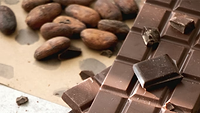Study Finds Pesticides, PFAS, Other Toxic Chemicals in Vast Majority of Dutch Strawberry Samples

Image credit: Joanna Kosinska via Unsplash
Pesticide residues were detected in 92 percent of conventionally grown Dutch strawberries but none of the two organic strawberry samples collected for a recent sampling and testing project conducted by Pesticide Action Network Netherlands (PAN-NL). The majority of samples also contained other chemicals known to be harmful to human health.
In June 2024, PAN-NL purchased 15 strawberry samples at retail locations across the Netherlands, including two organic supermarkets. Alongside the 12 total types of pesticides detected in the samples—with an average of three different pesticides per sample—PAN-NL found 69 percent of the strawberries to contain per- and polyfluoroalkyl substances (PFAS) and 46 percent to be contaminated with other chemicals deemed toxic by the EU. Specifically, the “other” toxic chemicals included fludioxonil, cyprodinil, pirimicarb, and difenoconazole; which are known as “candidates for replacement,” because regulations require the use of safer alternatives to these substances.
Furthermore, none of the conventionally grown strawberries were compliant with the European Commission’s maximum residue limit (MRL) for pesticides in baby and toddler foods, which is 0.01 milligrams per kilogram (mg/kg). The samples exceeded this MRL by 20–120 times. All but one sample were compliant with pesticide residue MRLs for adults, except for a sample containing 0.057 mg/kg of the PFAS pesticide cyflufenamid, surpassing the EU MRL of 0.04 mg/kg.
EU regulations do not determine an MRL for the sum of all pesticide residues detected in a strawberry sample, but the total concentration of the sum of residues in conventional samples ranged from 0.046–1.214 mg/kg, with an average of 0.437 mg/kg.
On a positive note, however, the organic samples did not test positive for any pesticide residues. Additionally, in comparison to the results of sampling and testing from 2021–2022, conventional strawberries grown in 2024 contained slightly less pesticides residues.
Looking for a reprint of this article?
From high-res PDFs to custom plaques, order your copy today!






